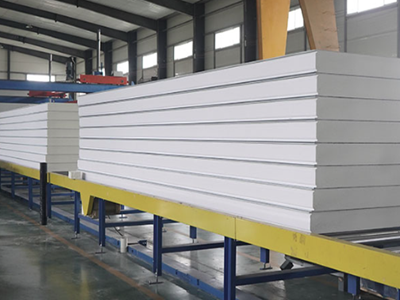In the quest for energy-efficient buildings and industrial systems, thermal insulation plays a vital role. One of the most widely used materials in the field of thermal insulation is polyisocyanurate foam, commonly known as PIR. This organic polymer has excellent thermal properties, fire resistance, and long-term durability. PIR foam has gained wide acceptance in the construction and refrigeration industries as it not only improves energy efficiency but also meets strict safety and environmental standards.
What is PIR Foam Made Of?
Polyisocyanurate foam is primarily made from two key ingredients: isocyanates and polyethers (polyols). These raw materials react chemically to form a rigid foam structure. However, the process is more complex than simply mixing the two substances. PIR foam is manufactured using a precise combination of catalysts, flame retardants, and environmentally friendly blowing agents, all of which contribute to the foam’s unique properties.
Isocyanates are reactive chemicals that play a central role in the polymerization process, helping to form a solid foam structure.
Polyols (polyethers) serve as building blocks that react with isocyanates to create the foam matrix.
Catalysts speed up the chemical reaction between isocyanates and polyols, ensuring that the foam is formed evenly and achieves the desired physical properties.
Flame retardants are added to PIR formulations to enhance the material’s ability to resist burning and slow the spread of flames in the event of a fire.
Environmentally friendly blowing agents are used to create the foam cells, which do not damage the ozone layer or contribute to global warming, making PIR an environmentally friendly insulation choice.
How PIR Foam is Manufactured
The production of PIR foam involves a carefully controlled process to ensure that the materials are fully mixed, reacted, and foamed under specific conditions. The reaction between the isocyanate and polyol is exothermic, meaning that it releases heat, which helps the foam expand and form its characteristic rigid structure.
During this process, the presence of a catalyst is critical to controlling the rate of reaction. The catalyst ensures that the foam rises and cures evenly, preventing defects such as voids or uneven density. This precision is essential to achieving the thermal and mechanical properties required of PIR foam.
In addition to the catalyst, flame retardants are added to the formulation to give PIR foam excellent fire resistance. Unlike other insulation materials, PIR foam chars when exposed to heat, creating a protective barrier that slows the spread of flames and helps maintain structural integrity during a fire.
In addition, the use of environmentally friendly blowing agents such as hydrofluoroolefins (HFOs) reflects the industry’s commitment to reducing the environmental impact of insulation materials. These blowing agents were selected because they have a low global warming potential (GWP) and zero ozone depletion potential (ODP), making PIR a more sustainable alternative to traditional foams.
Key Benefits of Polyisocyanurate Foam (PIR)
Polyisocyanurate Foam offers several advantages that make it a preferred choice for modern insulation needs:
Exceptional Thermal Insulation
PIR foam boasts a low thermal conductivity, meaning it provides superior insulation with less material compared to other types of foam. Its closed-cell structure effectively traps gas within the cells, minimizing heat transfer. This high insulating performance allows for thinner insulation layers while still achieving energy efficiency, which is crucial for meeting today’s building regulations.
Outstanding Fire Resistance
PIR foam’s improved fire performance is one of its most significant benefits. It is designed to char rather than burn, forming a protective layer that helps contain flames and reduce heat spread. This makes PIR an ideal choice for applications where fire safety is a critical concern, such as in commercial buildings, industrial facilities, and transportation.
Long-Term Durability and Stability
PIR foam maintains its structural integrity and insulating properties over time, even in harsh environments. It resists shrinkage, water absorption, and chemical degradation, ensuring that it continues to perform effectively throughout the life of the building or system it insulates.
Eco-Friendly Manufacturing Process
With the increasing focus on sustainability, PIR foam stands out for its environmentally conscious production process. The use of low-GWP foaming agents significantly reduces the foam’s environmental footprint. Additionally, PIR foam’s excellent insulating properties contribute to energy savings, which indirectly reduces greenhouse gas emissions from heating and cooling systems.
Applications of PIR Foam in Various Industries
Thanks to its excellent insulating properties and fire resistance, PIR foam is used across a wide range of applications. In the construction sector, PIR is extensively employed in insulation for walls, roofs, and floors, helping to create energy-efficient and fire-safe buildings. Its ability to provide high thermal resistance with minimal thickness makes it particularly valuable in projects where space constraints exist.
In industrial applications, PIR foam is used for insulating refrigeration units, cold storage facilities, and pipelines. Its thermal stability and fire-retardant properties make it well-suited for high-performance environments where temperature control and safety are paramount.
Conclusion: Why Choose PIR Foam?
As energy efficiency, fire safety, and environmental sustainability become increasingly important in modern construction and industrial processes, Polyisocyanurate Foam (PIR) has emerged as a leading insulation material. Its unique combination of thermal performance, fire resistance, and eco-friendly production make it a valuable choice for builders, architects, and engineers looking for reliable and efficient insulation solutions.
Whether you are designing a new building, retrofitting an existing structure, or enhancing the thermal performance of refrigeration systems, PIR foam offers a versatile and high-performance solution that meets the demands of today’s stringent building codes and environmental standards.
This expanded version includes more detail on the production process, properties, and applications of PIR. Let me know if you’d like to make further adjustments or expand on any specific section!
Post time: Dec-26-2024


